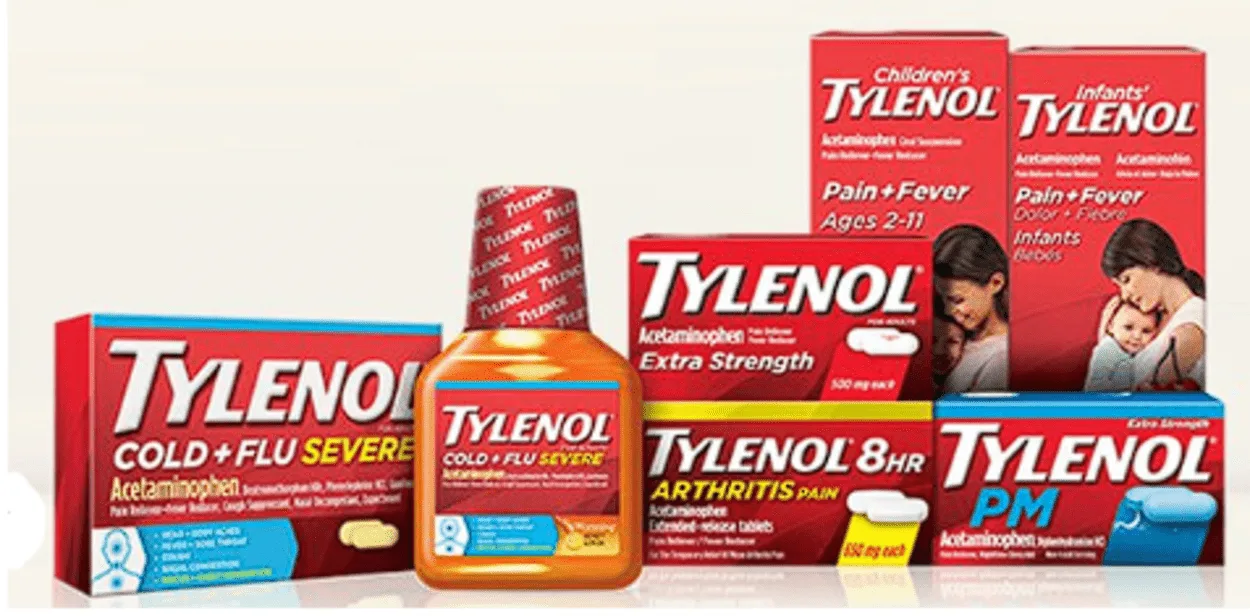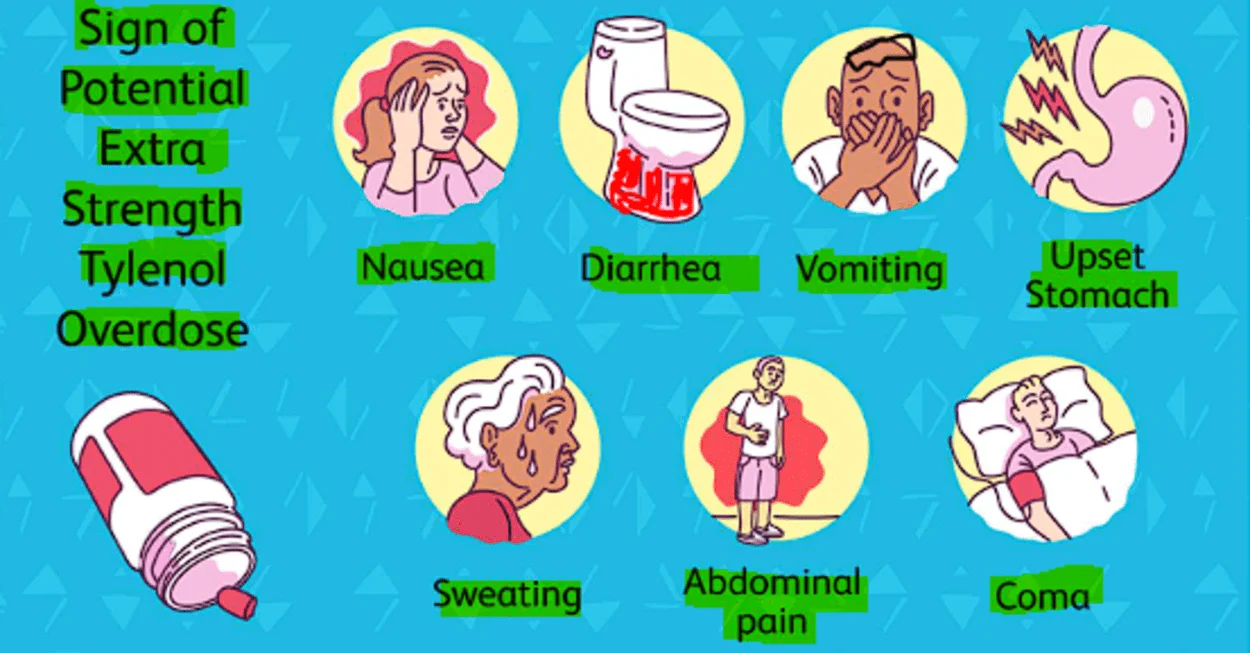When it comes to treating fevers, headaches, and other aches and pains, Tylenol has been a trusted brand for decades.
But with so many different types of Tylenol in the market, it can be confusing to know which one to choose for you or your child.
There’s no such difference in the formulation of child’s and adult’s Tylenol except the fact that the prices, required dosage, speed of action, etc.
In this comprehensive guide, we’ll break down the key differences between children’s and adult Tylenol, including dosages, ingredients, and safety considerations.
So, let’s dive in and learn everything you need to know about this popular drug.
Active Ingredients In Children’s And Adult Tylenol
Whether you’re a parent trying to soothe a crying infant or an adult looking for relief from a stubborn migraine, understanding the nuances of Tylenol products can help you make the best choice for your specific needs.
Acetaminophen is the same active component in both children and adults, Tylenol. Acetaminophen is a painkiller and fever reducer that works by inhibiting the production of the body’s natural chemicals that account for fever in the body.

The medication’s strength varies depending on the patient’s age, even if the active ingredients are the same.
Children’s Tylenol is available in a variety of dosages and potencies. The most popular ones are Babies’ Drops, Children’s Liquid, Children’s Meltaway, and Junior Strength Chewable Tablets.
These dosages range from 80 mg per 5 ml for the infant drops up to 160 mg per 5 ml for the children’s liquid of acetaminophen.
Adult Tylenol is also available in different strengths and dosages. Regular-strength caplets, extra-strength caplets, and extra-strength gel caps are the most widely used.
These dosages range from 325 mg of standard dose acetaminophen per caplet to 500 mg of each gelcap (Extra Strength).
Children’s Tylenol vs. Adult Tylenol
Concentration
The active ingredient in Tylenol is acetaminophen. However, the concentration of acetaminophen differs between children’s and adults’ Tylenol.
Children’s Tylenol contains a lower concentration of acetaminophen per milliliter compared to adult Tylenol.
This difference is because children are more susceptible to the side effects of acetaminophen. Therefore, it is crucial to give them the appropriate dosage.
Dosage Recommendations
The recommended dosage for Children’s Tylenol is based on the child’s weight and age.
It is essential to follow the dosage instructions carefully to avoid giving your child too much or too little medication.
Here is a table that outlines the recommended dosage for Children’s Tylenol:
| Child’s Weight | Infant Drops (80mg/0.8ml) | Children’s Suspension (160mg/5ml) |
| 6-11 lbs. | 0.4ml | N/A |
| 12-17 lbs. | 0.8ml | 2.5ml |
| 18-23 lbs. | 1.2ml | 3.75ml |
| 24-35 lbs. | 1.6ml | 5ml |
| 36-47 lbs. | N/A | 7.5ml |
| 48-59 lbs. | N/A | 10ml |
| 60-71 lbs. | N/A | 12.5ml |
| 72-95 lbs. | N/A | 15ml |
It is important to note that Children’s Tylenol should not be given to infants younger than two months of age, except under the advice and supervision of a healthcare professional.
Whereas, the recommended dosage for adult Tylenol is based on the strength of the medication.
Adult Tylenol is available in two strengths: regular strength (325mg per tablet) and extra strength (500mg per tablet). The recommended dosage for adult Tylenol is as follows:
| Tylenol Strength | Dosage |
| Regular Strength (325mg) | 2 tablets every 4-6 hours as needed |
| Extra Strength (500mg) | 2 tablets every 6 hours as needed |
It is important to note that the maximum daily dose of acetaminophen for adults is 4,000mg. Taking more than the recommended dose can cause liver damage.
Before giving your child or yourself Tylenol, read the guidelines and labels to be safe and steer clear of any potential problems from overdosing.
This goes for all medicines, before taking any medication, especially if your child is under two years old, it is essential to consult your doctor.
Forms of Tylenol
A common over-the-counter drug used by both adults and children to treat pain and lower temperature is Tylenol.
To get the finest form of Tylenol for your requirements, keep in mind that there are numerous varieties available for various age groups and illnesses.
Children’s Tylenol Suspension Liquid is the most often used type of Tylenol for kids.
Younger children are more frequently treated with this liquid version of Tylenol since it is simple to administer and measure, and it is available in a variety of strengths to provide the most efficient dosage.

The most common varieties for adults are Tylenol Extra Strength and Tylenol PM.
For treating minor aches and pains, Tylenol Extra Strength is prepared with 500 milligrams of acetaminophen, while Tylenol PM mixes 500 milligrams of acetaminophen with 25 milligrams of diphenhydramine hydrochloride to treat sporadic insomnia.
Furthermore, Tylenol Arthritis Pain offers individuals relief from minor aches and pains related to arthritis.
When to use
It might be challenging to determine the best type of Tylenol to use while treating a sick child or adult. While both children’s and adult Tylenol can reduce pain, you should be aware of some significant variations between the two.
Children’s Tylenol is available in both liquid and chewable tablet versions, and it’s specially made for kids between the ages of 2 and 11.
Compared to the adult version, it has less of an active component, acetaminophen. Children can take their medication more conveniently, which lowers the possibility of overdosing.
Adult Tylenol, on the other hand, is designed for people 12 years of age and older. It’s available in tablets and has higher acetaminophen concentrations than the children’s version.
It is recommended for adults due to its increased ability to manage more intense pain.
Safety considerations
When it comes to taking Tylenol, it’s important to consider safety measures for both adults and children. To ensure the safe and effective use of Tylenol, always read the product label carefully and follow all instructions.
For adults, it’s recommended to take the regular Tylenol dosage every four to six hours, up to a maximum of four grams (four thousand milligrams) per day.
If you are pregnant or nursing, consult with a doctor before taking any medication. Additionally, do not take Tylenol if you have liver problems, as it can directly affect your liver tissues.
For children, it is important to follow the dosage instructions for their respective age groups.
If a child is under two years old, consult a doctor before giving Tylenol. For children aged two to eleven, use the children’s Tylenol and administer the correct dosage according to age and weight.
It is important to never exceed the maximum dosage and never give Tylenol to a child younger than two years old.
Additionally, always keep Tylenol out of the reach of children and never give a child Tylenol if they are allergic to any of the ingredients.
Price
Lastly, the real difference is between the prices of both adult’s and children’s versions of Tylenol.
On average, Children’s Tylenol costs roughly $10.96 the of course varies when it comes to discounts, stores, etc. An adult’s Tylenol costs around $6.55, keeping in mind different discounts, etc.
As you can see, the price for children’s Tylenol is much more than an adult’s Tylenol. An adult can use children’s Tylenol for their dosage.
Side effects Of Tylenol
Tylenol is a popular over-the-counter pain reliever, but with both adult and children’s versions, it’s important to understand the differences.
While both are considered safe for use, there are some potential side effects associated with Tylenol.

Side effects of Tylenol include:
- nausea
- vomiting
- stomach pain
- loss of appetite
- drowsiness and dizziness
- liver damage
If you experience any of these side effects while taking Tylenol, contact your healthcare provider right away.
It’s important to note that children are more likely to experience side effects than adults, so it’s important to closely monitor any child taking Tylenol.
If you’re considering taking Tylenol, be sure to read the warning labels and talk to your healthcare provider to make sure it’s a safe and appropriate choice for you.
Alternatives To Tylenol
When it comes to pain relief, Tylenol is one of the most popular options available. But it’s not the only option!
There is a range of alternatives to Tylenol that can provide you with the pain relief you need without the potential side effects of Tylenol.
One of the most popular alternatives to Tylenol is ibuprofen. Ibuprofen is a nonsteroidal anti-inflammatory drug (NSAID) that works to reduce inflammation and pain.
It’s available in both over-the-counter and prescription forms and can be used to treat a variety of conditions, such as headaches, muscle aches, and arthritis pain.

For those looking for natural alternatives, there are a number of remedies available. Herbal teas, such as chamomile, peppermint, and ginger, can provide relief from headaches and muscle pain
FAQs:
Can adults take children’s Tylenol?
Yes, they can. Adults can consume children’s Tylenol at a higher price but at the appropriate dosage for them.
What distinguishes children’s Tylenol from Ibuprofen?
Ibuprofen is often only given to children over the age of six months, although acetaminophen can be given to younger children. Ibuprofen does last longer, though—6 to 8 hours, versus 4 to 6 hours for Tylenol.
What medication compares to children’s Tylenol?
Ibuprofen, Oxycodone, Hydrocodone, etc.
Conclusion
- It’s important to understand the differences between Children’s and Adult Tylenol. Knowing the age-appropriate dosage and use of each will help you make an informed decision and provide the most effective relief for any pain or fever.
- Children’s Tylenol is specifically formulated to be safe for children ages two and up. It contains the active ingredient Acetaminophen and comes in several different formulations such as liquid, chewable, and tablet.
- It has a lower concentration of Acetaminophen than the adult version and is designed to provide fast-acting, effective relief for symptoms such as fever, aches, and pains.
- Adult Tylenol, on the other hand, contains a higher concentration of Acetaminophen and is designed to provide quick relief from more severe symptoms.
- It is not recommended for children under the age of 18 and should only be used if recommended by a doctor.
- Alternatives include natural ingredients like herbal tea while chemically, Ibuprofen is a good substitute.

